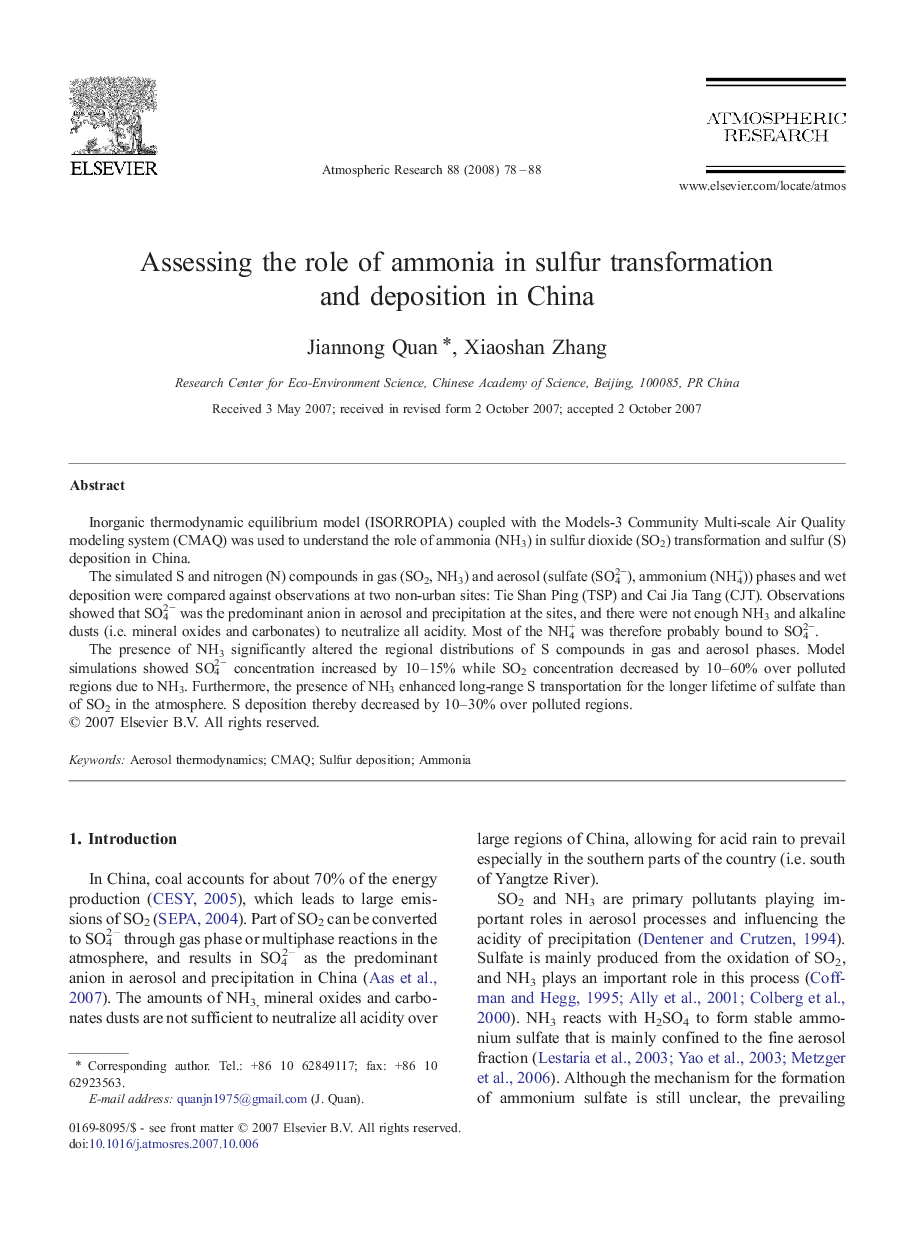| Article ID | Journal | Published Year | Pages | File Type |
|---|---|---|---|---|
| 4451296 | Atmospheric Research | 2008 | 11 Pages |
Inorganic thermodynamic equilibrium model (ISORROPIA) coupled with the Models-3 Community Multi-scale Air Quality modeling system (CMAQ) was used to understand the role of ammonia (NH3) in sulfur dioxide (SO2) transformation and sulfur (S) deposition in China.The simulated S and nitrogen (N) compounds in gas (SO2, NH3) and aerosol (sulfate (SO42−), ammonium (NH4+)) phases and wet deposition were compared against observations at two non-urban sites: Tie Shan Ping (TSP) and Cai Jia Tang (CJT). Observations showed that SO42− was the predominant anion in aerosol and precipitation at the sites, and there were not enough NH3 and alkaline dusts (i.e. mineral oxides and carbonates) to neutralize all acidity. Most of the NH4+ was therefore probably bound to SO42−.The presence of NH3 significantly altered the regional distributions of S compounds in gas and aerosol phases. Model simulations showed SO42− concentration increased by 10–15% while SO2 concentration decreased by 10–60% over polluted regions due to NH3. Furthermore, the presence of NH3 enhanced long-range S transportation for the longer lifetime of sulfate than of SO2 in the atmosphere. S deposition thereby decreased by 10–30% over polluted regions.
